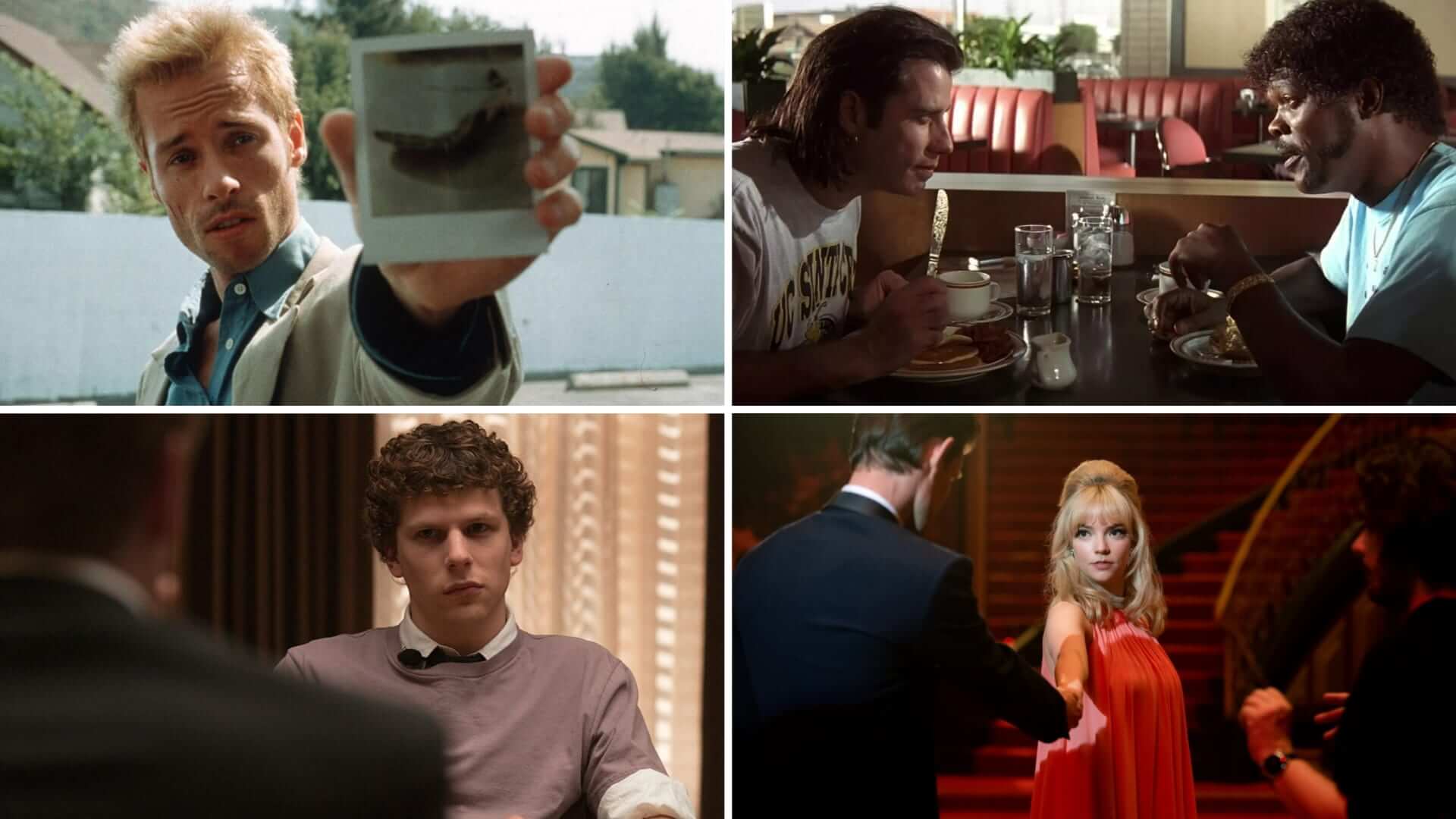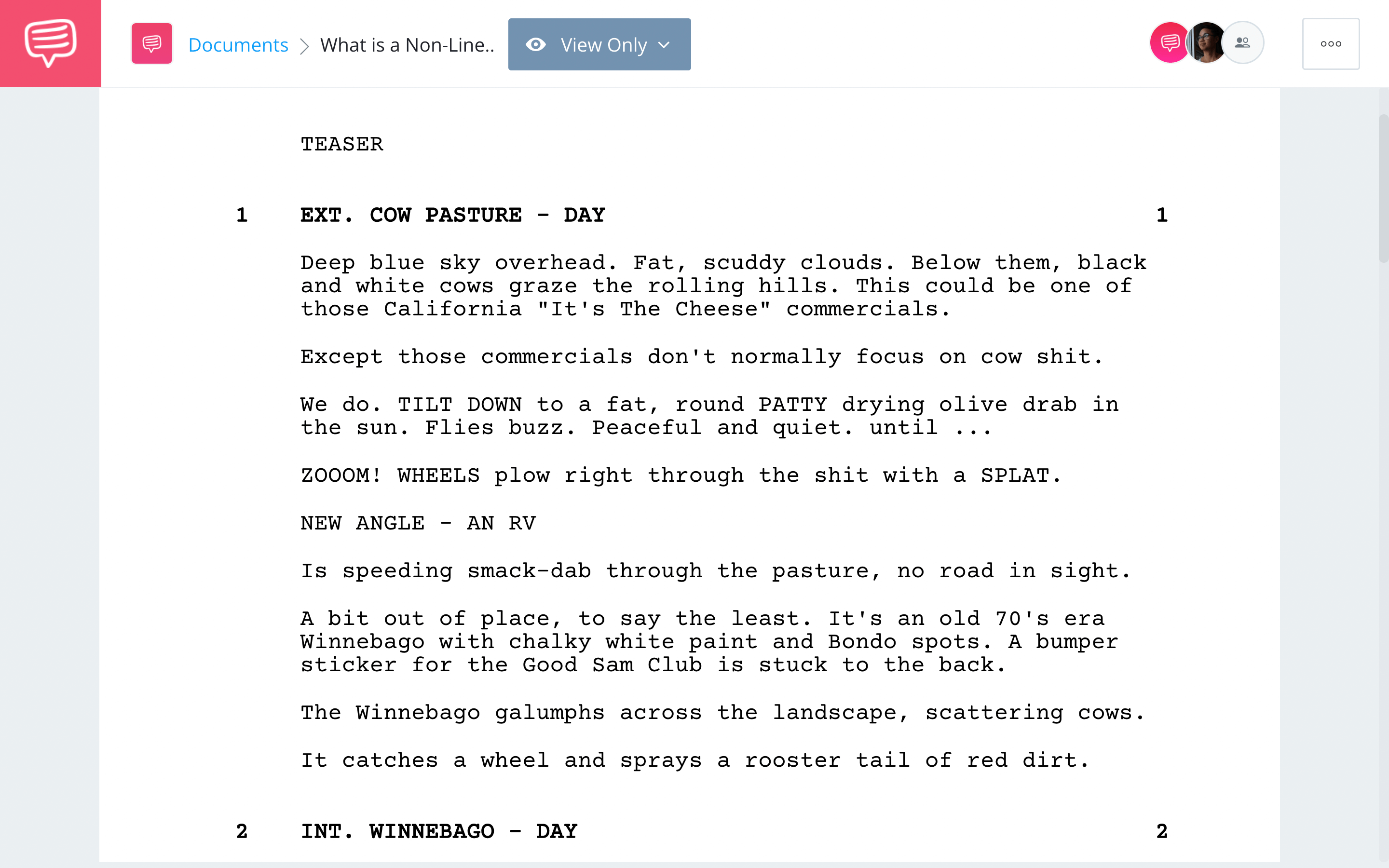Our physical experience of life is chronological. Yet our internal experience of life may not be. We reminisce on the past and anticipate the future. This uniquely human experience is portrayed on the big screen through non-linear storytelling. What is a non-linear plot used for? Non-linear plots allow filmmakers to rearrange time in an order that best serves their story. The variations of non-linear stories are bound by the limits of time itself. In this article, we’ll explore non-linear storytelling and how some of cinema’s best films use it to tell compelling stories.
What is a Non Linear Plot in Film?
First, let’s define non-linear plot
A film, or any story for that matter, is either linear or non-linear. Before we dive into the benefits of a non-linear narrative, let’s look at the non-linear plot definition and how it differs from more conventional, linear films.
NON-LINEAR PLOT DEFINITION
What is a non-linear plot?
A non-linear plot is a storytelling technique in which a narrative is told out of chronological order. Non-linear plots come in various forms. They can jump back and forward in time avoiding any linear pattern. Non-linear plots can weave multiple plot lines and time lines together to create a cohesive story.
Non-linear narrative examples:
- Pulp Fiction
- Memento
- Citizen Kane
- Forrest Gump
Now that we have the basic definition laid out, let's run through the various applications and benefits of this type of storytelling.
Non Linear Narrative Components
Develop characters
Character development is one of the most important components of a successful television show. It is the driving force behind an audience’s investment in the show. Screenwriters often use dialogue to lay out the exposition of a character. But an effective visual tool to establish a backstory is non-linear storytelling.
Take Mad Men for example. Don Draper’s past is a central point of conflict in the show. Establishing his past through dialogue is not as effective as the non-linear technique that the show employs.
In this scene, the audience learns about Don’s true past and identity. Matthew Weiner, creator of Mad Men, jumps back in time to show us this pivotal event in Don’s life rather than simply telling us.
Mad Men • Non-linear narrative examples
One can only imagine how this crucial piece of information would not be as impactful if executed solely through dialogue. Mad Men uses non-linear storytelling throughout the series to continuously provide backstory for characters. The more the audience learns about these characters, the more invested they become.
Related Posts
“A story should have a beginning, a middle and an end… but not necessarily in that order.”
– Jean-Luc Godard
Non Linear Narrative Uses
Emotional impact
What is a non-linear plot used for as it pertains to emotional impact on an audience? When audiences find themselves teary-eyed watching a scene, it is likely due to their empathy rather than sympathy.
If an audience relates to a person’s heartache on an experiential level, the emotional impact will be greater.
Screenwriter Charlie Kaufman and director Michel Gondry force this empathy through non-linear storytelling in Eternal Sunshine of the Spotless Mind.
In this scene, Joel (Jim Carrey) explains how he attempts to resolve a break-up with Clementine (Kate Winslet). But his expectations betray him in the worst possible way.
Eternal Sunshine of the Spotless Mind scene • non linear storytelling
Firstly, Kaufman’s decision to jump back in time allows the audience to experience this heartbreaking moment alongside Joel. Imagine if Joel simply explained the event to his friends. It would fall short.
Secondly, Gondry makes us feel the fresh pain Joel feels through creative direction. Rather than cutting, Gondry illustrates moving forward in time by moving through space and back into the living room. This makes the sting of rejection feel fresh, just as Joel feels it.
These decisions ramp up the emotional impact of the scene. If the scene played chronologically with Joel explaining his encounter with Clementine, we may sympathize with him, but not empathize.
Related Posts
What is a Non Linear Plot Used For?
Elicit curiosity
Lastly and perhaps most importantly, non-linear plots draw an audience in. How? By making them ask questions. TV screenwriters often use non-linear plots to engage an audience through a teaser. A teaser, or hook, is the opening scene of a TV episode designed to grab the audience's attention.
Vince Gilligans’ Breaking Bad executes this brilliantly. The opening scene of the Breaking Bad pilot episode grabs the audience's attention immediately.
We brought the pilot script into StudioBinder’s screenwriting software to analyze how the non-linear plot creates a brilliant opening hook.
Breaking Bad Pilot Episode • Read Full Scene
The opening immediately entices the audience’s curiosity. Who is this man in his underpants and gas mask? Did he kill the guys in the RV? Will he get arrested or shot?
When the episode ends with a resolution to the opening scene, Gilligan creates a full circle that satisfies all of the audience’s questions while also leaving them wanting more. This is exactly what a pilot should achieve.
Check out our entire TV Writing and Development course including this analysis of what makes Breaking Bad one of the best pilots in TV history.
How to Write a Pilot • Subscribe on YouTube
As we’ve laid out in this article, non-linear plots are an incredible storytelling device. But they work most effectively when the story calls for it. Many stories are meant to be told chronologically.
The best way to know if a non-linear structure will help your story is by analyzing your favorite non-linear films and TV shows. Take note of how and why they work.
Up Next
How to Master Dramatic Plot Structure
Plot structure is the backbone of a film’s narrative. It determines the pace and flow of a film. If you’re writing a drama, be sure to check out our article in which we analyze the most effective plot structure to dramatic films.

